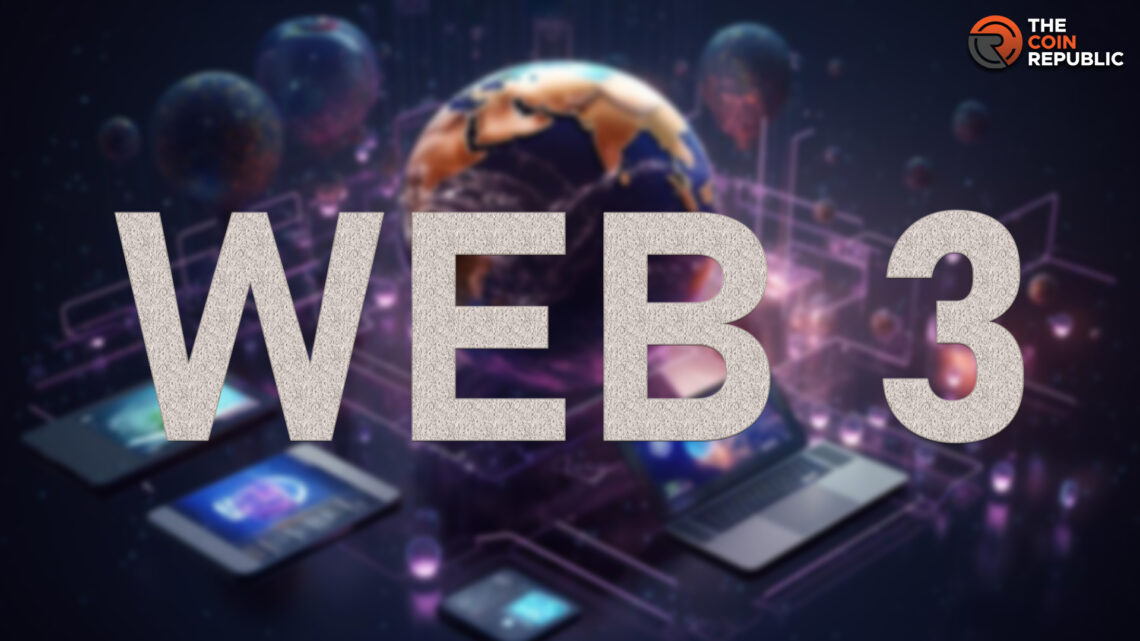- 1 Web3, the vision for a new decentralized Internet is an idea for a new iteration of the World Wide Web (WWW) incorporating concepts like blockchain technologies and decentralization.
- 2 Web3 is an open-source and distributed platform, using cryptocurrencies, blockchain, and NFTs to empower the internet.
Centralization contributed to the onboarding of billions of individuals to the WWW along with developing a robust and steady infrastructure. However, centralized internet also comes with several speculations such as Web monopolization by large technology companies and less possibility of data backup. Web3 is the solution to all these plights. The concept offers power in the hands of individuals instead of corporations, which means built, owned, and operated by users.
Let’s take a look at the journey of Web3 and why you should care about it.
Web3 at a Glance
It all started in 1990, with the introduction of Web 1.0, a platform allowing information sharing from anywhere on Earth. As a static website, the platform has close to zero interaction between operators and is mainly known as a read-only web. The WWW concept took the next step towards success in 2004 with the introduction of Web 2.0, a web compatible with read-write operations. This all happens with the emergence of social media platforms, making it relaxing for companies to share content as well as collect users’ perceptions.
The term “Web3” came into light in 2014 by Ethereum Gavin Wood, the co-founder of Ethereum. However, the idea caught fire in 2021 from large technology organizations, cryptocurrency enthusiasts, and venture capital firms. Unlike Web 1.0 and Web 2.0, Web3 offers individuals the functionality to read, write, and own the web. With the vision to offer a new and better internet, Web3 empowered users in terms of ownership.
What Web3 has to offer?
Web3 or the decentralized internet has a lot more to offer as compared to Web1 and Web2. Here are the five key characteristics of Web3 that make it unique and more reliable.
Web3 is the next big progressive leap forward of the internet, driven by NFT, blockchain, and cryptocurrency. One of the biggest features of Web3 is decentralization which makes it one of the most precious concepts in the modern world. As a challenge to the centralized internet, Web3 ensured that centralization is not the only option forward. The platform is powered by token-based economies and blockchain-based infrastructure, allowing users to interact and transact without third-party intervention.
The platform has the power to kick off a major power shift, taking away the controls from the authorities and intermediaries and placing the power in the hands of users. Web3 made it easy for users to freely use the internet.
The next feature to focus on is the connectivity of Web3 to the development of the Metaverse. The technology made it easy for the users to interact and transact with others in the virtual space. Trading of digital assets in the metaverse next represents the significance of Web3.
Apart from the virtual space, the technology also secured a strong position in real-world uses. The unpredictable price swings and headlines in the NFT space better explain the use of Web3 in the real world.
Another powerful feature of Web3 is the transformation of business operations with the help of Blockchain. Blockchain is going to become one of the most transformative Web3 technologies for businesses.
Conclusion
Web3 is the next big progressive leap forward of the internet that puts power in the hands of users. Features like decentralization, power shift to users, development of the metaverse, business operation transformation, and real-world use made Web3 a giant player in the era of technology.

Adarsh Singh is a true connoisseur of Defi and Blockchain technologies, who left his job at a “Big 4” multinational finance firm to pursue crypto and NFT trading full-time. He has a strong background in finance, with MBA from a prestigious B-school. He delves deep into these innovative fields, unraveling their intricacies. Uncovering hidden gems, be it coins, tokens or NFTs, is his expertise. NFTs drive deep interest for him, and his creative analysis of NFTs opens up engaging narratives. He strives to bring decentralized digital assets accessible to the masses.


 Home
Home News
News







